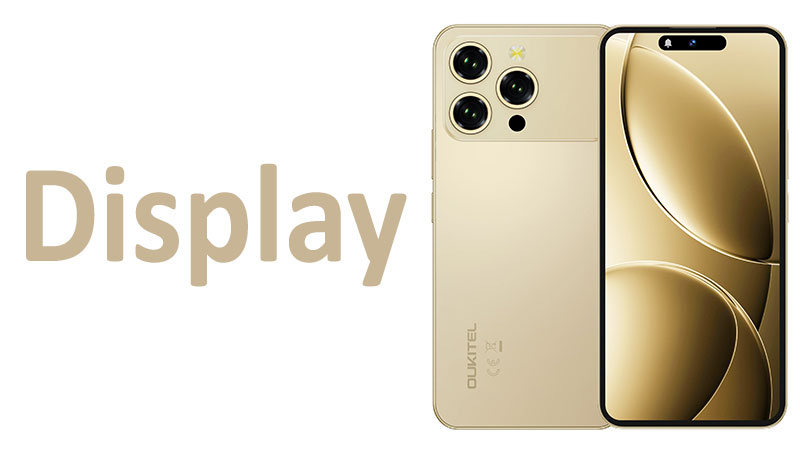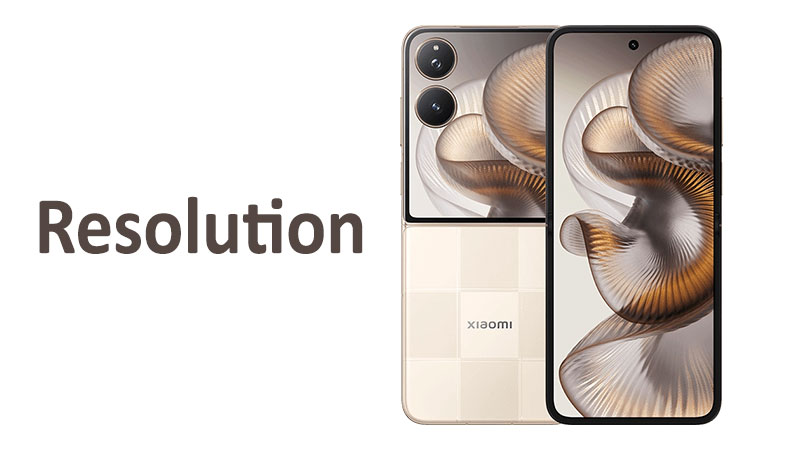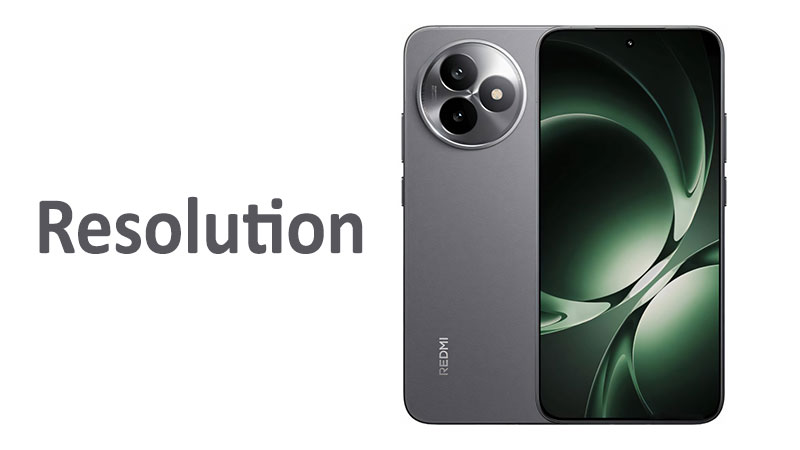The Oukitel P1 Pro display is the primary window into the smartphone experience. A high-quality screen is essential for modern mobile usage. It affects everything from gaming performance to media consumption. Therefore, a detailed review of the Oukitel P1 Pro screen is necessary. This comprehensive analysis covers its technical specifications entirely. We will examine the AMOLED panel and the fast 120Hz refresh rate. We also study its resolution, brightness, and protection features. This article provides crucial information for potential buyers. Understanding the display specifications helps in making a confident decision. The screen is a key investment in any new device.
Advanced Display Technology: Exploring the AMOLED Panel
The Oukitel P1 Pro utilizes an AMOLED screen type. AMOLED stands for Active-Matrix Organic Light-Emitting Diode. This technology represents a significant advantage in visual quality. Most high-end and premium phones use AMOLED displays. Each pixel in the AMOLED panel emits its own light. This self-emissive nature creates stunning visual effects.
Perfect Blacks and Infinite Contrast
AMOLED technology allows for perfect black levels. This happens because individual pixels switch off completely. When a pixel is off, it emits zero light. This results in truly inky black areas on the screen. Consequently, the display offers an infinite contrast ratio. Deep blacks contrast dramatically with bright colors. This contrast greatly enhances the depth of photos and videos. It creates a much more immersive viewing experience overall.
Color Vibrancy and Saturation
AMOLED screens are celebrated for their vibrant colors. They often exhibit intense saturation. This feature makes images and icons look more striking. Media consumption, like watching streaming services, truly shines on this display. Furthermore, the colors usually pop off the screen immediately. This visual punch is often preferred by casual users. It makes the viewing experience very enjoyable.
Comparison to IPS LCD Technology
AMOLED is a clear upgrade over older IPS LCD technology. IPS panels require a constant backlight for operation. Therefore, they struggle to produce true black. IPS displays typically show a grayish black instead. Moreover, AMOLED offers much faster pixel response times. This results in clearer motion with less ghosting. The Oukitel P1 Pro benefits significantly from this superior panel type. The inclusion of AMOLED elevates the phone’s visual performance immediately.
Color Calibration and Settings
Oukitel likely includes software settings for color adjustment. Users can often select different color profiles. These profiles may include “Vivid” or “Natural” modes. The Vivid setting maximizes saturation for eye-catching results. The Natural mode aims for better color accuracy, however. It often aligns with the sRGB standard. This flexibility allows users to customize the screen’s appearance.
Resolution and Sharpness: Full HD+ Clarity
The display resolution dictates the sharpness of the screen. The Oukitel P1 Pro features a high resolution of 1080 x 2412 pixels. This is known as a Full HD+ resolution. It offers excellent detail for the screen size.
Pixel Density Analysis
The 6.7-inch screen combined with this resolution results in a density of approximately 394 pixels per inch (ppi). This ppi figure signifies excellent sharpness. Text is crisp and easy to read. Fine details in high-resolution images remain clearly visible. Most users cannot distinguish individual pixels at this density. The image quality is considered high-definition and very clear.
The 20:9 Aspect Ratio
The display uses a 20:9 aspect ratio. This is a slightly taller and narrower shape than older 16:9 screens. The taller screen makes scrolling more efficient. You see more content before needing to swipe up. It is also ideal for modern movie formats. Many streaming videos are formatted for this taller display size. This aspect ratio enhances productivity and media viewing.
Comparison: FHD+ vs. QHD+
The Full HD+ (1080p) resolution is a smart choice for this phone. Technically superior Quad HD+ (1440p) screens exist on flagship devices. However, the visual difference is minimal for most users. Full HD+ provides excellent clarity without major performance drain. It consumes significantly less battery power than 1440p displays. It also reduces the workload on the phone’s graphics processor. This results in smoother overall system performance. The choice of 1080p is a great balance of clarity and efficiency.
Impact on Gaming and Video Quality
All gaming and video content looks incredibly clear on this screen. Streaming services display their maximum Full HD quality perfectly. The resolution is fully optimized for the screen size. The combination of high resolution and AMOLED colors delivers a superior visual punch. Therefore, the display is well-suited for demanding multimedia tasks.
Screen Size and Ergonomics: The 6.7-inch Standard
The physical dimensions of the screen impact how you interact with the phone. The Oukitel P1 Pro features a large 6.7-inch display. This size is currently standard for many modern smartphones.
Immersive Viewing Experience
The 6.7-inch display provides an expansive area for viewing. This makes for a highly immersive experience. Gaming is more engaging on a larger panel. Watching movies feels more cinematic on this spacious screen. Users appreciate the size when multitasking. Running two applications in a split-screen view becomes much more practical.
Screen-to-Body Ratio: Minimal Bezels
The phone achieves an impressive ~87.3% screen-to-body ratio. This ratio indicates that the screen dominates the front of the device. The bezels surrounding the display are noticeably thin. Thin bezels contribute to a premium and modern aesthetic. They maximize the usable screen space for content. This high ratio is expected in mid-to-high-range smartphones.
Handling and Usability
A 6.7-inch phone often requires two hands for comfortable operation. Users with smaller hands may find reaching the top of the screen challenging. However, the 20:9 aspect ratio makes the phone relatively narrow. This helps improve the overall grip somewhat. The physical size is an important consideration for buyers. You must weigh the benefits of immersion against the ease of single-handed use. Many users are now accustomed to this large screen format.
Comparison to Compact Displays
The Oukitel P1 Pro is not designed for users who prefer compact phones. Smaller devices, around 6.1 inches, are easier to pocket and use one-handed. However, those smaller screens sacrifice media immersion. The Oukitel P1 Pro clearly prioritizes a maximized viewing area. It offers a much grander experience for visual media. This is a common trend in the current smartphone market.
Performance: The Fluid 120Hz Refresh Rate
The refresh rate determines the smoothness of all on-screen motion. The Oukitel P1 Pro features a rapid 120Hz refresh rate. This is a significant indicator of high performance.
Enhanced User Experience
The 120Hz rate updates the screen 120 times every second. This speed is double the rate of standard 60Hz displays. The difference in motion quality is profound. Scrolling through long websites becomes incredibly fluid. App animations appear slicker and more immediate. The phone simply feels faster and more responsive to touch. This fluidity contributes greatly to a premium user experience.
Benefits for Gaming
The high refresh rate is particularly beneficial for mobile gaming. The display can render up to 120 frames per second in supported titles. This minimizes motion blur during fast action sequences. It also provides a competitive edge in fast-paced games. Smoother visuals can help improve a player’s reaction time. The Oukitel P1 Pro delivers a high-quality gaming experience as a result.
Comparison to 60Hz and 90Hz
The 120Hz rate is a massive upgrade from a basic 60Hz screen. The motion appears twice as smooth. It is also visibly smoother than a 90Hz panel. While 90Hz offers a good middle ground, 120Hz is the current gold standard. The Oukitel P1 Pro offers true flagship-level motion performance. This is a key selling point against many mid-range competitors. They often stick to the older 60Hz or 90Hz standards.
Power Consumption and 120Hz
Running the display at 120Hz consumes more battery power. This is an unavoidable consequence of increased speed. However, AMOLED technology is inherently efficient. This helps to manage the power impact somewhat. The phone’s software likely includes settings to switch to 60Hz. Users can use 60Hz mode to maximize battery life when needed. This choice allows the user to prioritize speed or endurance.
Brightness Levels: 500 Nits for Standard Use
Display brightness is essential for usability in different lighting. The Oukitel P1 Pro features a typical brightness of 500 nits. Nits measure the luminance, or light output, of the screen.
Indoor Performance
The 500 nits level is more than sufficient for comfortable indoor use. The screen is clear and vibrant in office or home environments. Users will likely set the brightness lower than 500 nits indoors. This helps to prevent eye strain. The AMOLED panel’s efficiency at low brightness also remains excellent.
Outdoor Visibility Challenges
Outdoor use presents a greater challenge for a 500-nit screen. Direct sunlight can overpower the display at this level. Reading text messages or viewing maps outdoors may become difficult. Users might need to seek shade to view the screen comfortably. Many premium phones now offer 1000 nits or more of peak brightness. This is a key area where the Oukitel P1 Pro shows its mid-range positioning.
Comparison and Context
Top-tier flagship phones can reach 1500 to 2000 nits. This ensures perfect visibility even under harsh sunlight. The 500 nits on the Oukitel P1 Pro is acceptable for its price. It performs reliably in most daily situations. However, intense direct sunlight is its limitation. Buyers should consider their typical usage environment. Heavy outdoor users may want a brighter option.
HDR Content and Brightness
The 500 nits figure is the typical maximum brightness. The screen may be capable of short bursts of higher brightness for HDR content. HDR, or High Dynamic Range, requires high peak luminance. This is necessary to correctly display highlights and bright flashes. While 500 nits is not ideal for true HDR impact, the AMOLED contrast helps. The deep blacks make the relatively bright areas stand out significantly.
Durability and Protection: Corning Gorilla Glass 5
Screen protection is vital for the long-term health of the display. The Oukitel P1 Pro uses Corning Gorilla Glass 5 for its protection layer. This is a reputable and proven solution.
Corning Gorilla Glass 5 Features
Gorilla Glass 5 is known for its excellent resistance to drops. Corning states it survives drops onto hard, rough surfaces from 1.6 meters. It offers a significant improvement over earlier generations. This protection helps reduce the risk of catastrophic screen damage. It is a highly respected glass used across many popular smartphones.
Scratch Resistance and Mohs Level 6
The screen boasts a scratch resistance rating of Mohs level 6. The Mohs scale measures the hardness of materials. A level 6 resistance means the glass resists scratching from most common objects. Keys, coins, and general pocket debris should not scratch the screen easily. However, materials like sand or quartz contain minerals rated at level 7 or higher. These materials can still scratch the display.
Real-World Durability
Corning Gorilla Glass 5 provides reliable daily defense. It minimizes damage from minor drops and everyday wear. However, buyers should never assume any glass is indestructible. Using a screen protector and a protective case remains the best practice. This combination ensures maximum longevity for the display. The inclusion of this glass is a major plus for durability.
Comparison to Newer Gorilla Glass Versions
Newer versions, such as Gorilla Glass Victus, offer superior protection. They improve both scratch resistance and drop performance. However, those newer generations significantly increase the manufacturing cost. Gorilla Glass 5 is an excellent compromise for a mid-range phone. It provides proven, robust protection without adding excessive expense. The Oukitel P1 Pro makes a smart choice prioritizing reliable defense.
Oukitel P1 Pro Display Pros and Cons
A balanced overview helps summarize the strengths and weaknesses. The Oukitel P1 Pro display is a feature-rich panel. It clearly offers more positives than negatives for its target audience.
Key Advantages (Pros)
The AMOLED technology delivers perfect blacks and outstanding contrast. This results in beautiful, punchy visuals. The 120Hz refresh rate ensures exceptional smoothness and fluidity. This enhances both daily use and gaming performance. The Full HD+ resolution provides high sharpness at 394 ppi. Text and images look crisp and detailed. The 6.7-inch size offers a highly immersive viewing experience. It is perfect for media and multitasking. Corning Gorilla Glass 5 provides a robust, proven layer of protection. This is crucial for overall durability. The aspect ratio is modern, making scrolling and movie watching efficient.
Limitations and Drawbacks (Cons)
The 500 nits brightness is inadequate for comfortable viewing in direct, strong sunlight. This is its main weakness compared to flagship rivals. The 120Hz rate can increase battery consumption noticeably. Users must manage the refresh rate setting manually. The 6.7-inch size can be challenging for true one-handed operation. This large size impacts the phone’s pocketability. The color calibration may be overly saturated in the default settings. Users might need to switch to a ‘Natural’ mode for accurate viewing.
Important Points for the Oukitel P1 Pro Buyer
Understanding your needs relative to the phone’s specifications is key. The Oukitel P1 Pro display is excellent, but it has specific characteristics. Consider these points before finalizing your purchase.
Prioritizing Visuals and Speed
This phone is ideal for users who prioritize speed and visual quality. The AMOLED and 120Hz combination is a powerful pairing. It makes mobile games feel smooth and responsive. It also makes videos look vibrant with deep contrast. If these two features are high on your list, the P1 Pro is a compelling option. The viewing experience is genuinely high-end.
Assessing Brightness Needs
Think about where you use your phone most often. If your usage is mostly indoors, 500 nits is perfectly fine. If you spend hours outside, the lack of higher peak brightness may be frustrating. You may need to rely on hand-shading the screen frequently. This is an important compromise to consider.
The Value of Gorilla Glass 5
The inclusion of Gorilla Glass 5 is a significant advantage. It offers better drop protection than many other mid-range phones. This means you do not need to rush out and buy a screen protector immediately. However, remember that all glass can eventually scratch or break. Investing in a good quality case remains a smart move. Protection is a continuous effort.
Understanding the Trade-Offs
The Oukitel P1 Pro is not a flagship phone. It takes the best features, like AMOLED and 120Hz, and balances them. It makes compromises in peak brightness and potentially processing power efficiency. This combination provides great value for money. You get a premium look and feel without the premium price tag. The overall display is far superior to most budget devices.
Conclusion: Making an Informed Display Choice
The Oukitel P1 Pro display offers a highly attractive package. It successfully integrates features typically found only on expensive flagship devices. The 6.7-inch AMOLED panel delivers exceptional color, contrast, and immersion. The 120Hz refresh rate guarantees a smooth, fluid, and responsive user experience. This high speed is the biggest selling point for enthusiasts.
The display is sharp, boasting a 394 ppi density from its Full HD+ resolution. It offers excellent clarity for all media and text. Furthermore, the inclusion of Corning Gorilla Glass 5 ensures reliable durability. This adds great peace of mind for daily use.
However, the phone is limited by its 500 nits brightness. It struggles in direct sunlight compared to the brightest screens available. This is the main compromise for the price. For users who primarily use their phone indoors, this is a non-issue. For the vast majority of consumers, the Oukitel P1 Pro provides a visually stunning display. Its speed and clarity make it a strong contender in the competitive mid-range market. It is a smart choice for any buyer prioritizing multimedia and smooth performance.
Frequently Asked Questions
What type of display panel does the Oukitel P1 Pro use?
The Oukitel P1 Pro uses an advanced AMOLED display panel. This provides excellent contrast and color.
What is the refresh rate of the Oukitel P1 Pro screen?
The screen features a high 120Hz refresh rate. This makes motion and scrolling extremely smooth.
Is the display bright enough for outdoor use?
The display offers 500 nits of brightness. This is sufficient for most indoor conditions. It may struggle under intense, direct sunlight.
What is the resolution and ppi of the screen?
The resolution is 1080 x 2412 pixels. This results in a sharp density of approximately 394 ppi.
What type of protective glass covers the Oukitel P1 Pro display?
The screen is protected by durable Corning Gorilla Glass 5. This glass offers good resistance against drops and scratches.



